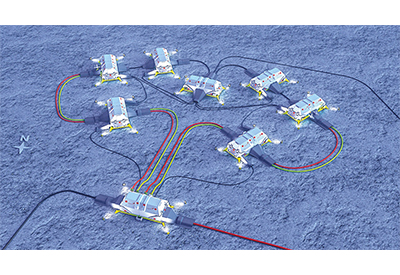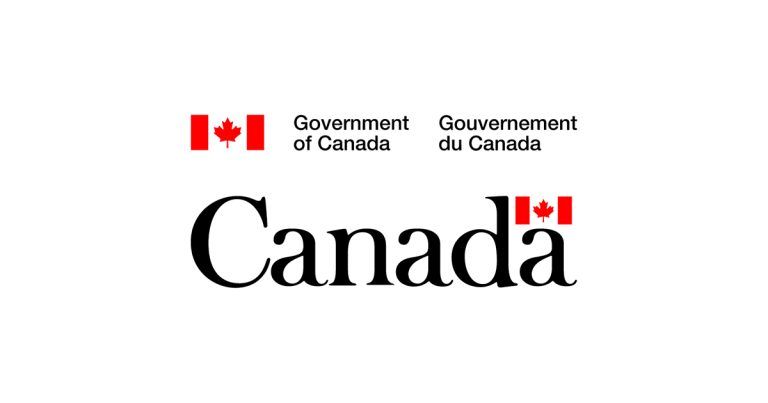ABB’s Subsea Technology is Powering the Seabed For a New Energy Future

February 3, 2020
The world’s demand for energy in the form of fossil fuels persists even as the availability and accessibility of mature oil and gas fields diminishes. To meet this demand, international oil and gas operators are moving into ever more challenging and remote environments, into ultra-deep waters. While previously too formidable and expensive to consider, the development of new smart, reliable and cost-efficient technologies can support the oil and gas industry’s ability to produce in the remote subsea environment and remain profitable. Advances in subsea electrification solutions for power transmission, distribution and conversion could one day allow an entire oil and gas production facility to be located on the seafloor, thereby enabling upstream companies to explore and exploit deeper, scarcer and more remote reservoirs. But before this can occur, industry requires highly reliable equipment that is virtually maintenance-free because the costs of retrieving equipment from the seafloor for repair would be prohibitive.
It is with this vision that ABB initiated a US$ 100 million Joint Industrial project (JIP) with Equinor (formerly Statoil), Total and Chevron with support from the Research Council of Norway in 2013. Relying on their preeminent position as the world’s electrification and automation leader, ABB has completed the development of an electrification system for transmission, distribution and conversion of power, to subsea pumps and gas compressors, at a peak capacity of 100 MW, to water depths up to 3,000 meters, with transmission distances up to 600 km; and with little or no maintenance for up to a lifetime of 30 years – a major step toward achieving a subsea factory.
The downside of topside installations
Nowadays, offshore hydrocarbon production facilities typically rely on power generated locally by gas turbines located topside, from a fixed or floating platform (or more commonly from multiple platforms) or from ships. For subsea purposes, power is transported to equipment via multiple cables located close to power consumers, such as pumps and compressors, on the seabed: so-called long step out solutions. Topside installations require continual maintenance, complicated logistics and support; and rely on power generation that emit excesses of greenhouse gases – a costly endeavor.
The ability to distribute, transmit and convert power, subsea, over great distances at depth reliably, would be a game-changer for the oil and gas industry. By installing such electrification systems close to the load, space and weight are reduced on topside facilities, response time to wellheads is lowered, power supply demands are reduced and greenhouse gas emissions are mitigated. ABB has therefore brought its technical expertise to this expansive project, the completion of which is key to the future realization of an entire seafloor factory.
Rigorous design eases subsea electrification
ABB has used a ground-breaking design approach to develop a flexible, modular electrification solution based on their tried-and-trusted technologies:
• Subsea variable speed drive (VSD)
• Subsea medium voltage (MV) switchgear
• Subsea control and low voltage (LV) distribution
ABB drew on their expertise and experience in subsea power, having introduced the world’s first subsea transformer in 1999, to develop equipment that is versatile, robust, powerful and reliable. A deep understanding of the electrical and thermal properties of the equipment, as components, sub-assemblies and assemblies under extreme stress conditions has been essential for the success of this project.
Considering these demands, ABB implemented a rigorous qualification scheme and relied on the recommendations and Technical Readiness Level (TRL) stages defined in DNV RP-A203 for components, equipment and assemblies in hydrocarbon exploration and exploitation offshore. Requirements for topside systems and equipment, API 17F Standard for Subsea Production Control Systems, including thermal, vibration and pressure tests as well as accelerated lifetime testing and Equinor’s own requirements: TR3025 (eg, system design margins and equipment immunity levels) were deployed. This systematic project and design approach, along with deep-interaction with field experts from the JIP partners, allowed design changes to be identified and improvements made early on, thereby securing reliability within specified limits for successful risk management. In this way, the oil and gas industry will have the confidence they depend on that all developed technology is ready-for-use in the most challenging ultra-deep environment.
Qualification is king: the subsea electronic module
The subsea control and protection system is the brains of the overall subsea power solution and consists of main assemblies for power distribution, conversion, auxiliary supply and control of electric power supply. The new system must deliver power over a distance of up to 600 km to seabed power consumers placed on the seafloor at peak water depths of 3,000 m – something which has never been done before.
This gargantuan challenge was addressed by adopting a pragmatic, step-wise approach to the design of all equipment and systems, including the control system, from concept phase to system testing phase. Procedures were created to learn the behaviors and limits of materials, parts, components, devices, sub-assemblies and assemblies. Simulations, laboratory and field examinations enabled cyclical design modifications to be made following tests and re-tests. For instance, control devices were tested in hard to access environments to replicate remote subsea conditions. At times, under the harshest of environmental test conditions intermittent test deviations were recorded that disappeared once these conditions ceased. To capture the conditions that led to the perturbations, experts collected device data during testing and performed root causal analysis afterward. By relying on this ability to learn through design/test iterations, ABB could correct even elusive design problems and meet all qualifications for components, sub-assemblies and assemblies. This process led to the qualification of the assembled Subsea Electronics Module (SEM) prior to near-real-world field testing.
VSD design and qualification
Drives are at the heart of the subsea power solution; these devices control the speed and torque of subsea motors for seawater injection, boosting and compression applications on the seabed. Hence, VSDs were constructed to be modular, compact, robust and ultra-reliable – maintenance-free for up to 30 years.
The drive converts power to a variable output voltage ranging from 2.3 kV to 7.2 kV or more. The operating frequency range is limited to 200 Hz, except for high-speed compressor loads below 5 MVA. An output filter is integrated into the VSD to ensure that the power quality and voltage transients remain within motor and cable tolerances.
An integrated drive transformer is powered by the subsea switchgear at the rated supply voltage (11-33 kV), with either a standard supply frequency of 50/60 Hz or an impressive low frequency of LFAC 16⅔ Hz. This allows power to be transmitted by one cable over remarkably long distances, up to 600 km.
ABB’s VSD modular design can be scaled to operate a range of subsea motors with apparent powers up to 18 MVA. So, even the largest seabed compressor can be powered by two drive units in parallel configuration.
The VSDs (and MV switchgear) are enclosed in oil-filled, pressure-compensated tanks; the oil acts to insulate and cool the power components.
Based on a robust cell-topology with power semiconductors and built-in redundancies within the control and power circuits, the design facilitates minimal maintenance. If a power cell fails, the failure is prevented from migrating to neighboring cells; the drive continues to run, even with the loss of one or two cells per phase. Reliability is further enhanced by incorporating a fault management system that is in itself redundant on several levels.
Performing flawlessly during a 345 bars pressure test for over 3,000 hours in Equinor’s research and development facility in Trondheim, the main drive components and sub-assemblies – including optical fibers and connectors – demonstrated their readiness for real subsea operations at high pressure.
Subsea switchgear design and qualification
ABB’s medium voltage subsea switchgear is used to distribute power to the VSD and other power consumers located on the seabed.
The newly designed switchgear can support up to six feeders including an incoming breaker, or tie breaker to support two switchgears. The incomer of the switchgear connects to the secondary of a subsea step-down transformer, or directly to one subsea power cable from topside or shore. The feeders connect to the subsea power consumers (drives for seabed pumps and subsea compressors). With a rated phase-to-phase voltage of 36 kV and main bus bar current of 1,600 A, this modular and scalable design accommodates a range of system cases and configurations. The switchgear is integrated with two auxiliary step-down transformers used to power the redundant auxiliary power distribution system as separate retrievable units. Low-voltage miniature circuit breakers enable de-energizing of the system and independent retrieval of the connected auxiliary load, and provides protection from faults in the auxiliary system, and external power input for system status updates.
Based on the widely-used ABB vacuum breaker technologies, the oil-immersed components were tested under cyclic and static pressure and completed IEC/IEEE-type test programs. Qualification of the breakers also included make-and-break tests at 16⅔ Hz supply at rated short-circuit current and maximum asymmetry. Several breaker modules were manufactured and, together with relevant electrical and optical control interfaces, subjected to tests, eg, electrical-type tests, mechanical endurance and vibration tests for operation and transport cases, among others.
In an initial phase, four different designs of the 1-amospheric circuit breaker poles of different construction materials and designs were thoroughly investigated. The successful four-feeder breaker module design was then prototyped and tested by ABB in Ratingen, Germany.
Shallow water field tests say it all
Seizing on the success of laboratory testing, ABB and their JIP partners implemented critical field tests, so-called shallow water tests (SWT). In December 2017 a major milestone was reached when ABB successfully completed the first SWT of a full-scale prototype of a MV VSD, in ABB’s test site in Vaasa, Finland. The drive was operated over 1,000 hours, during a “power in the loop” test – in a back-to-back configuration with the grid. In this way only a few hundred kilowatts of losses were supplied by the grid. Significantly, the electronic and power components performed thermally in a superior manner during all environmental stress conditions encountered.
In June 2019, ABB initiated a critical 3,000 hours SWT of a prototype of the entire electrification solution, consisting of two VSDs in parallel configuration with switchgear and controls. The triumphant completion of this test and TRL 4 assessment by ABB and their JIP partners sets the stage for the forthcoming commercial launch of this remarkable modular electrification system.
From protected harbor to full launch
With a VSD capable of running a load of up to 9 MVA and supporting a load up to 18 MVA, in parallel configuration, this ultra-reliable, flexible and scalable solution covers most subsea power needs industry might desire. Moreover, the power source can now originate from any topside installation or, more importantly, from shore.
With this first-of-its-kind solution, ABB has more than met the rigorous test requirements and qualifications that the oil and gas industry demands. ABB’s novel design and test procedures; and collaboration with JIP partners have been central to the success of this achievement and provide confidence that ABB’s electrification solution is ready to take the deep-water plunge.









![Guide to the Canadian Electrical Code, Part 1[i] – A Road Map: Section 52 — Diagnostic imaging installations](https://electricalindustry.ca/wp-content/uploads/2022/11/Guide-CE-Code-2.png)






